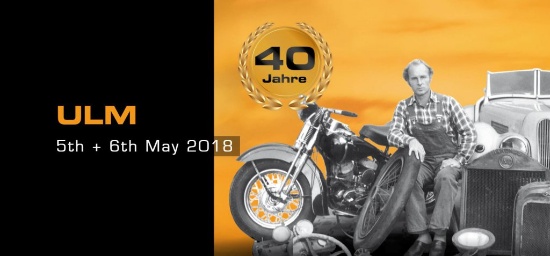
Technorama DER Oldtimermarkt in Europa
Technorama DER Oldtimermarkt in Europa
See Special Terms for additional fees
Description
*** LOT REMOVED ***
Lot # 26 (Sale Order: 26 of 46)
Autobianchi Bianchina Berlina
Lot # 27 (Sale Order: 27 of 46)
Pininfarina Spidereuropa
Lot # 28 (Sale Order: 28 of 46)
Bentley T1
Lot # 29 (Sale Order: 29 of 46)
Fiat 131 Supermirafiori Volumetrico Abarth 40/200
Lot # 30 (Sale Order: 30 of 46)
Chevrolet Corvette C1 Convertible
Lot # 31 (Sale Order: 31 of 46)
Lancia Delta HF Integrale EVO II Edizione Finale 171/250
Lot # 32 (Sale Order: 32 of 46)
Piaggio Vespa faro basso 125
Lot # 33 (Sale Order: 33 of 46)
Piaggio Vespa GS 160
Lot # 34 (Sale Order: 34 of 46)
Piaggio Vespa faro basso 125
Lot # 35 (Sale Order: 35 of 46)
Piaggio Vespa GS 160
Lot # 36 (Sale Order: 36 of 46)
Ford Taunus 1.6 L
Lot # 37 (Sale Order: 37 of 46)
NSU-Fiat Neckar Europa (103 G)
Lot # 38 (Sale Order: 38 of 46)
Saab 900 S Convertible
Lot # 39 (Sale Order: 39 of 46)
Mercedes-Benz 200 E (W124)
Lot # 40 (Sale Order: 40 of 46)
Ford Mustang Coupé 3.3
Lot # 41 (Sale Order: 41 of 46)
Mercedes-Benz 300 SL (R107)
Lot # 42 (Sale Order: 42 of 46)
Mercedes-Benz 250 S (W108)
Lot # 43 (Sale Order: 43 of 46)
VW Golf II GTI - 2 owners - german car - no cat
Lot # 44 (Sale Order: 44 of 46)
/ Bereits um 1979 wurde das Design festgelegt und ab 1980 befanden sich handgefertigte Prototypen in der Erprobung. Im August 1983 erfolgte die Vorstellung des Golf II (Typ 19E), zunächst in den Ausstattungsvarianten C, CL, GL und GLX (später als Carat bezeichnet). Als Nachfolgemodell des Golf I verfolgte auch die zweite Auflage weiterhin das Schrägheck-Grundkonzept des Vorgängers. Gegenüber dem Vorgänger wurde der Wagen um 17 cm länger, der Radstand nahm um 7,5 cm zu und das Leergewicht in der kleinsten Motorisierung stieg um 95 kg. Um den Luftwiderstandsbeiwert (Cw-Wert) niedrig zu halten, wurde der Wagen rundlicher gestaltet. Bei gleichem Erscheinungsbild mit charakteristischen Rundscheinwerfern und breiter C-Säule war der Cw-Wert etwas geringer und die Querschnittsfläche etwas größer als beim Vorgänger. Ab Januar 1984 wurde der Golf GTI der zweiten Generation angeboten, mit der auch erstmals eine größere Auswahl an Motoren einherging. Anfangs war nur der aus dem alten Modell bekannte 1,8 Liter 82 kW (112 PS) starke Motor mit acht Ventilen im GTI lieferbar. Ab März 1986 zusätzlich der neue 1,8 Liter 16V-Motor mit Vierventiltechnik und 102 kW (139 PS) Leistung, sowie 168 Nm Drehmoment. Im Februar 1987 wurde der 16V-Motor mit Katalysator und 95 kW (129 PS) vorgestellt, eine Kat-Version des 82-kW-Motors kam im Januar 1987 mit nun 79 kW (107 PS) auf den Markt. Fahrzeugbeschreibung: Dieser VW Golf II GTI 16V ist das starke Modell ohne Kat – mit 139 PS! Das Fahrzeug stammt aus dem Mai 1987 und erhält vor Übergabe noch einen neuen TÜV. Das Fahrzeug stammt aus 2.Hand und verfügt bereits über eine H-Zulassung. Deutsches Fahrzeug im Bestzustand! Farbe: Calypso-grün metallic. Das Fahrzeug ist komplett original – das originale Lenkrad wird auch noch mitgeliefert.
Citroen CX 2000 GT - 2 owners - only 52800 km
Lot # 45 (Sale Order: 45 of 46)
SBARRO ACA Spider Prototype
Lot # 46 (Sale Order: 46 of 46)


 x Cancel
x Cancel



















